Planting a range of flowers is the best way to attract a range of species.
PHOTOGRAPHY MEGAN PIGOTT
Sign up to our mailing list for the best stories delivered to your inbox.
The native and exotic species that will boost the number of Australian bees in your backyard.
Photography Armelle Habib words Jaclyn Crupi
The distribution of native Australian bees is mostly determined by climate; semi-arid and temperate regions of Australia have the greatest diversity of bee species. Many native bees are excellent pollinators, while a very small number of species make a unique and tangy honey known as ‘sugarbag honey’.
How many species you see in your garden will depend on how close you are to natural bushland, as you need to be within flight range of the bee’s ‘home turf’. That said, many native bee species survive in suburbia thanks to flowering gum trees (Eucalyptus spp.), bottlebrushes (Callistemon spp.) and paperbarks (Melaleuca spp.). Some species have also adapted to make full use of exotic plants and weeds. These include blue-banded bees and sweat bees. It’s also common to see some leafcutter bees (or at least the holes in foliage that are their calling cards).
There’s a lot you can do to support and welcome native bees to your backyard. The best way to attract an assortment of species is to plant a wide range of floral resources for them.
Think of flowering plants first. Many non-blooming trees are not much use to these flying friends (although they are loved by birds and butterflies). Pollen-producing plants emit aromas that attract native bees, which is helpful because their eyesight is not as good as you might think.
Not all pollen is equal, and some plants produce higher-quality protein-packed pollen than others. These include:
• banksias
• bottlebrushes (Callistemon spp.)
• emu bushes (Eremophila spp.)
• paperbarks (Melaleuca spp.).
In fact, not only do these plants produce high-quality pollen, but they also offer lots of sugar-rich nectar – and bees love them for this reason. If space in your garden is limited, then the best option is to select just a couple of these plants. If you have more room, try to include a diversity of plants with something in flower during every season. Most bee species are generalists, feeding on a range of plants throughout their life cycle.
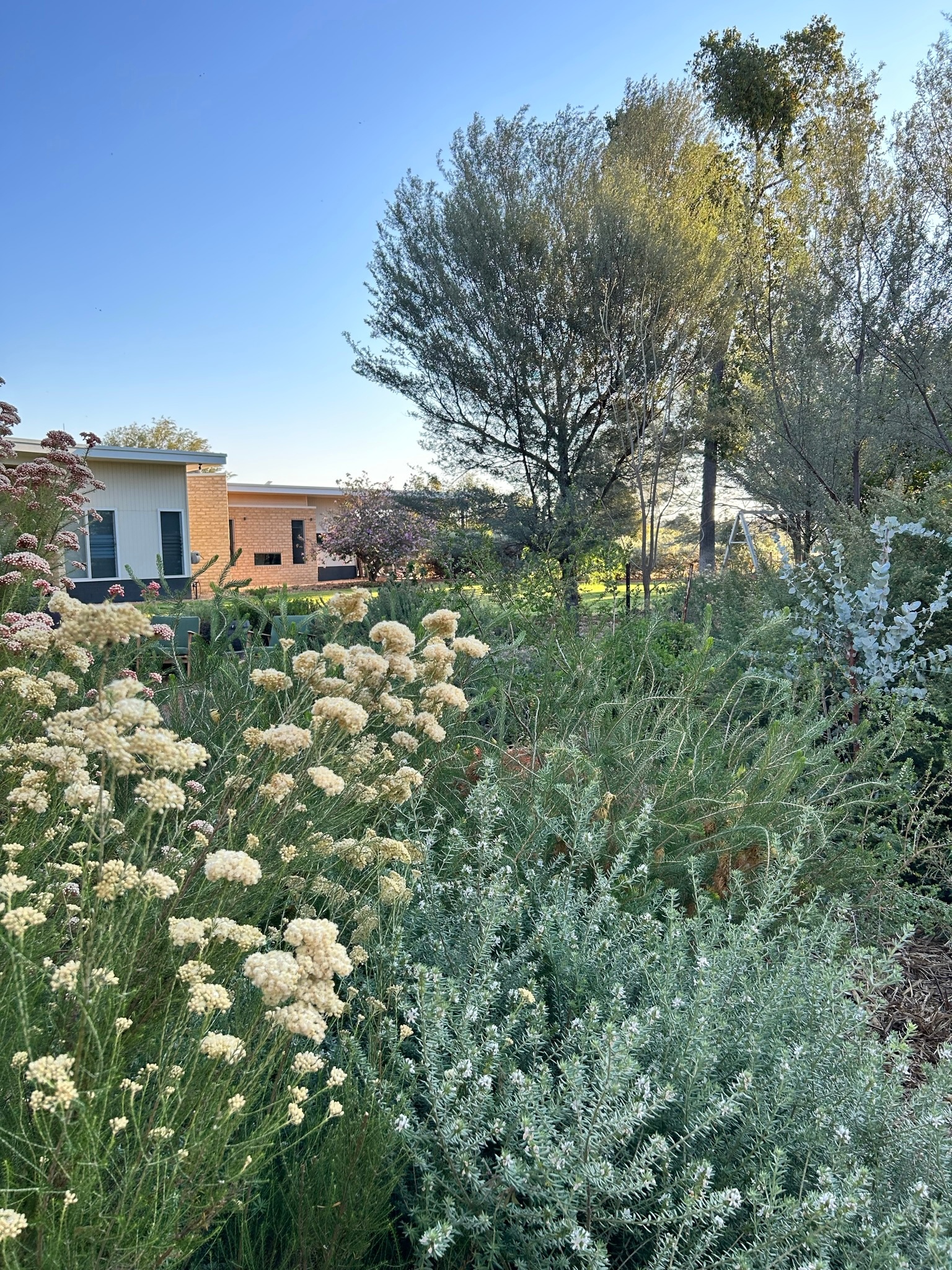
Using bore water on your garden involves a few tricks and techniques as Gin Gin Garden Club's Claire Austin discovers.
You might think that native bees only visit native plants, but try telling that to all of the native bees that flock to sage and lavender flowers!
NATIVE FLOWERS
Megachilid bees – such as resin bees and leafcutter bees – love native pea flowers and are the best pollinators of these beautiful blooms. Bush peas (Pultenaea spp.) and Hardenbergia species are their preferred pea flowers. Plants in the pea family (Fabaceae) should be included in your plant list because these tiny flowers are an important food source for these bees. Your native nursery will be able to tell you which ones are local or best suited to your area.
Native bluebells (Wahlenbergia spp.) are found across all Australian states and territories, and they’re incredibly important supporters of bee biodiversity. So, if you want to add just one plant to your garden, balcony or courtyard that all local bee species will be attracted to, then it should definitely be a native bluebell. Native daisies (Brachyscome spp.) and everlastings (Chrysocephalum spp.) are also highly attractive to many native bees.
Trees and plants in the myrtle family (Myrtaceae), including tea-trees (Leptospermum spp.), gum trees (Eucalyptus spp.) and other flowering gums, and lilly pillies (Syzygium spp.) are beloved by many native bees, especially short-tongued species in the Colletidae family.
EXOTIC SPECIES
You might think that native bees only visit native plants, but try telling that to all of the native bees that flock to sage (Salvia sp.) and lavender (Lavandula sp.) flowers! These plants are both easy to grow and do well in tough climates. There is a huge variety of ornamental and edible sages, so no matter what plant size or flower colour you desire, you’re sure to find one to suit your needs. They bloom for much of the year and are a huge drawcard for lots of different native bees.
When in flower, these exotic plants will attract a host of native bees:
• herbs – basil (Ocimum basilicum), coriander (Coriandrum sativum), oregano (Origanum vulgare), parsley (Petroselinum crispum), sage (Salvia officinalis), thyme (Thymus vulgaris)
• ornamentals – marigolds (Calendula spp.; Tagetes spp.), dahlias, diosmas (Coleonema spp.), lavenders (Lavandula spp.), sages (Salvia spp.)
• vegetables – capsicum (Capsicum annuum), eggplant (Solanum melongena), pea (Lathyrus oleraceus), tomato (Solanum lycopersicum).
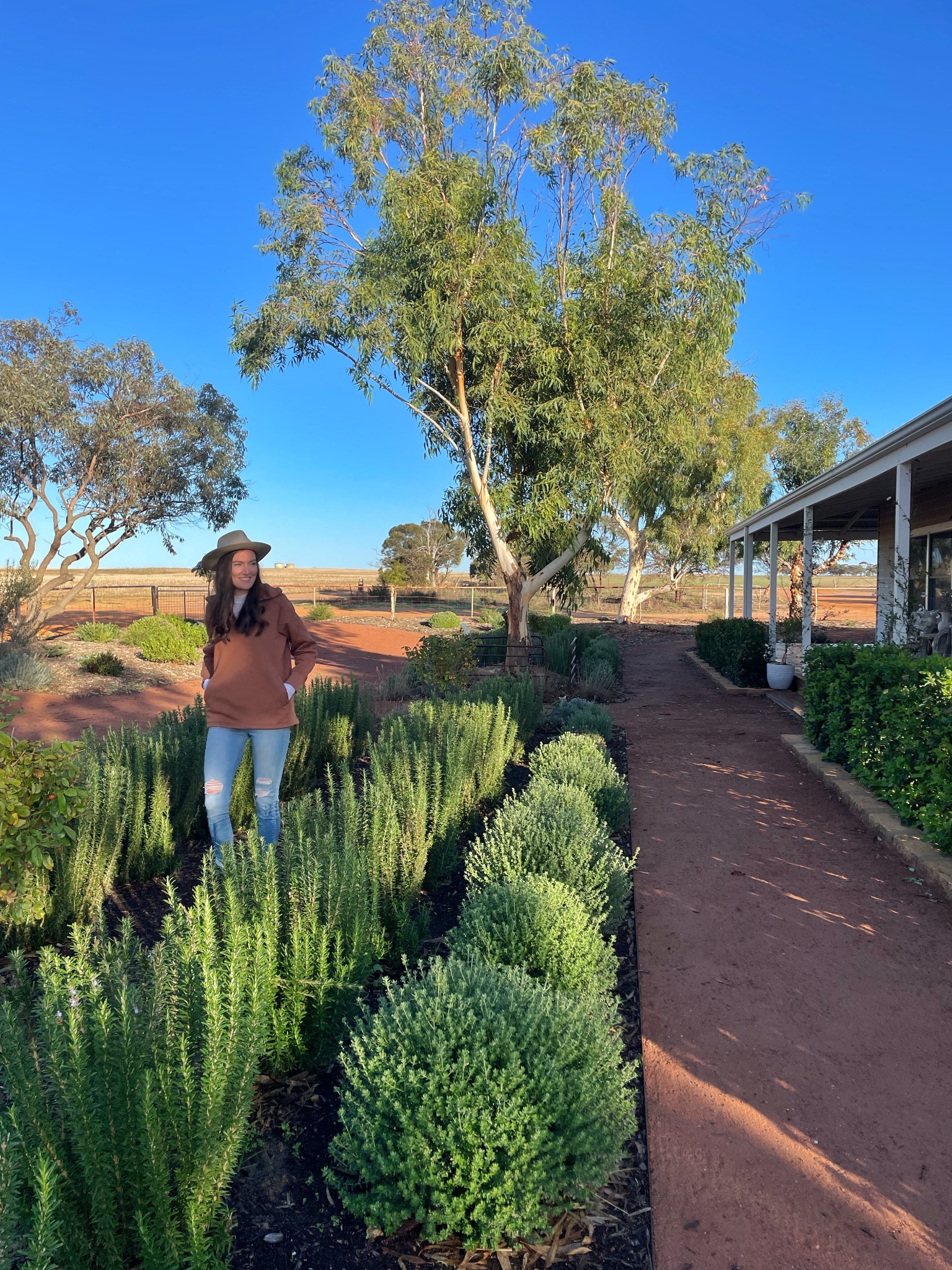
First step: make a plan and focus on one or two projects at a time.
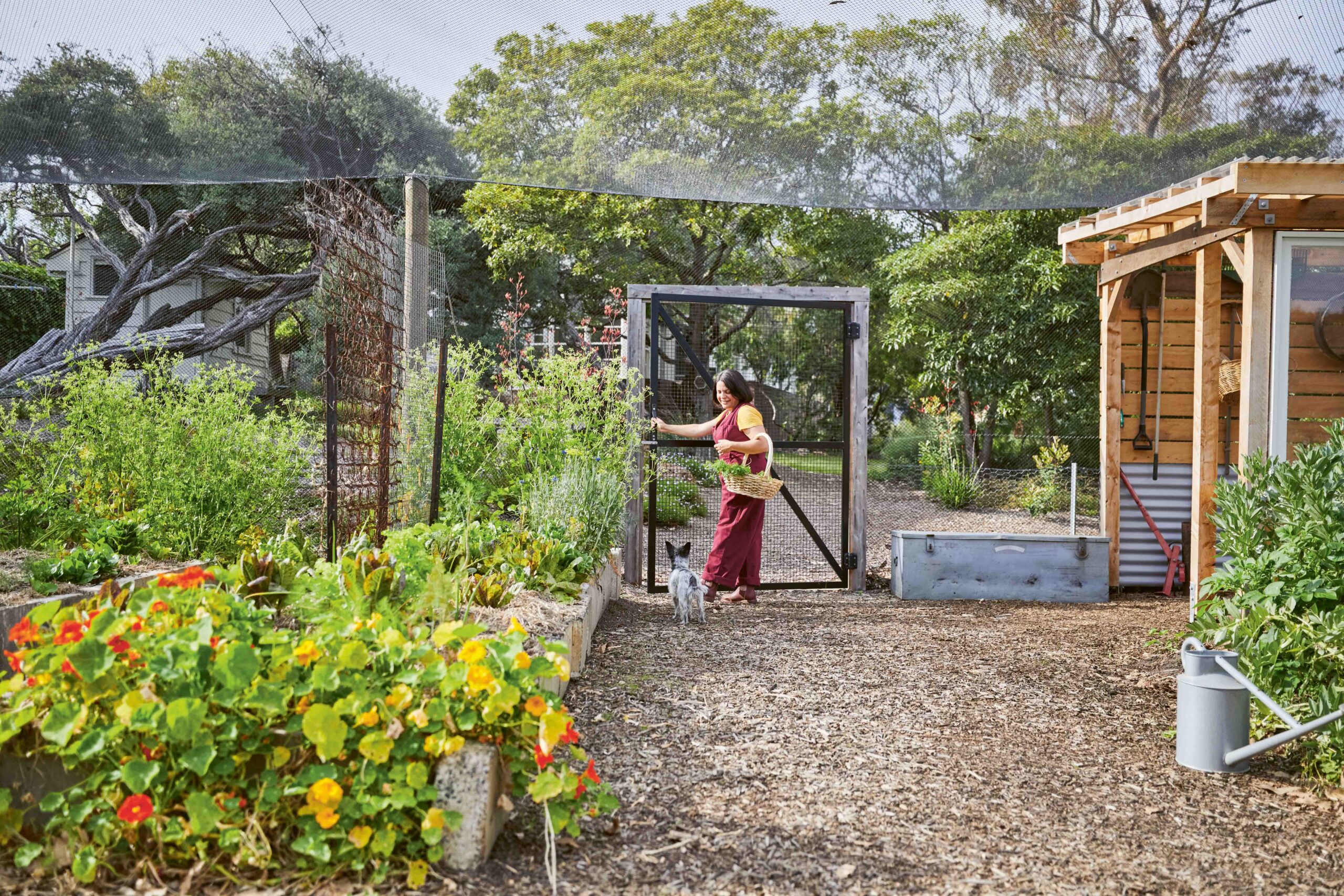
The author at work in her vegetable garden, which was once a disused tennis court. The nets exclude birds but allow bees and butterflies to enter.
PHOTOGRAPHY ARMELLE HABIB
Native bees have a few preferences when it comes to pollen and nectar sources, especially in terms of flower shape and colour. You might naturally choose a variety of flower shapes and colours for aesthetic reasons, but it’s good to know that this is also beneficial for native bees.
TONGUE LENGTH
Some native bees – especially those in the Colletidae and Halictidae families – have short tongues, so they need flowers with large, bowl-shaped nectar glands. Others – such as teddy bear bees – have long tongues, and they prefer tubular-shaped blooms such as those of correas and fan flowers (Scaevola spp.). So, when thinking about flowering plants, be sure to include a range of flower shapes to cater to the diversity of native bees. This flower variation will also add beauty and interest to the garden.
FLOWER COLOURS
European honey bees can see colours well; this helps them to find flowers and consequently the nectar and pollen within them. The hues that attract these bees are blue, purple/violet, white and yellow. Many flowers also release a scent that draws poor-sighted native bees to them.
YEAR-ROUND BLOOMS
Some bees – such as carpenter bees – begin foraging as soon as spring arrives, while resin bees and leafcutter bees often become active in summer. If you plant a variety of species that provide flowers from early spring to late autumn, then you’ll keep native bees happy during their busiest periods. Native bees are much less active in the winter months, so focus on flowering plants for birds at that time.
PLANTING IN CLUMPS
Plant the same flowers in clumps rather than dotting them around the garden. Flowers clustered into single-species groups will attract more pollinators than individual plants. Some bees also like to collect pollen from one plant species at a time, so allowing them to do this in the one spot will save them from expending energy flying all over the garden.
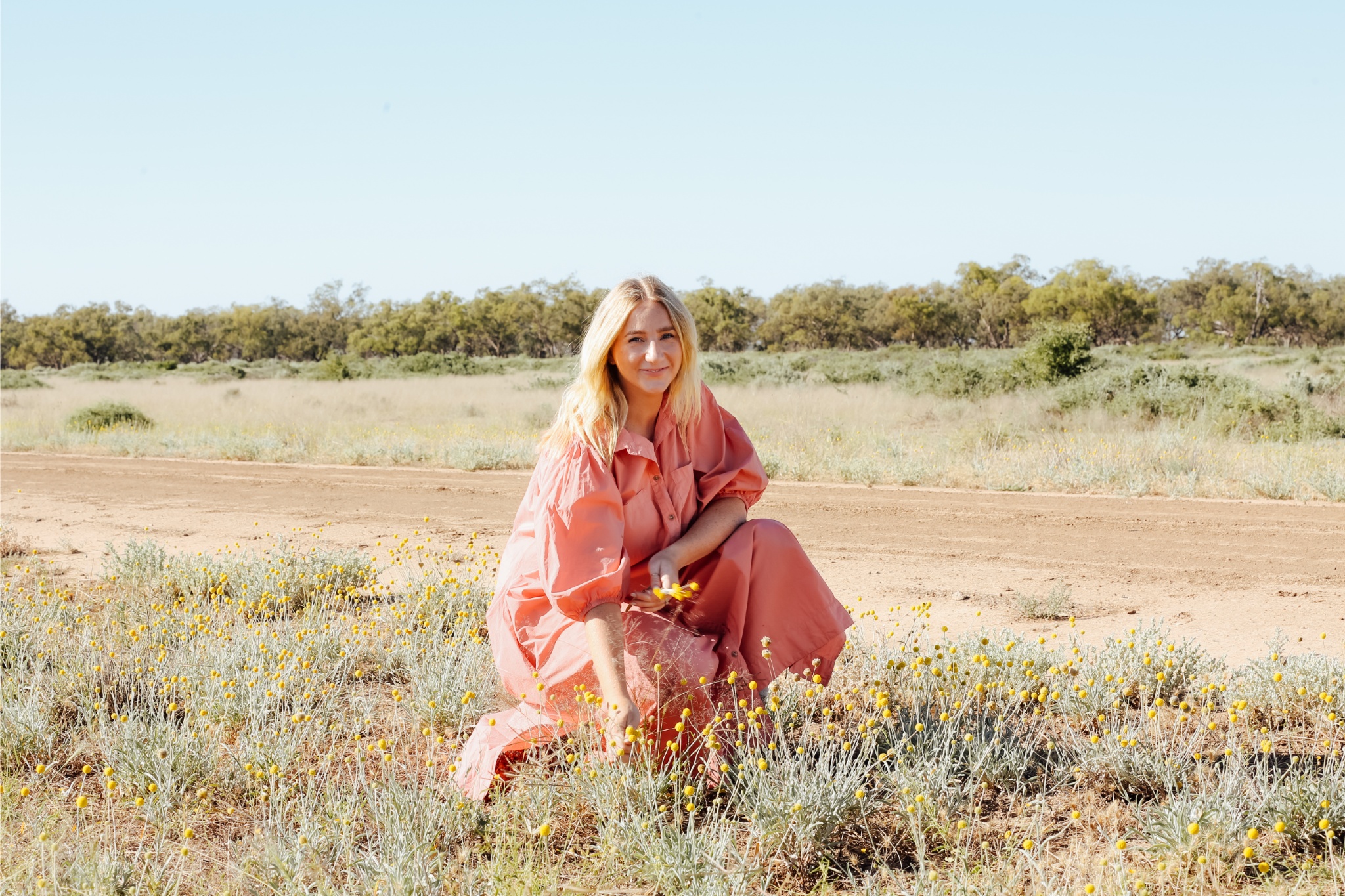
The Outback Gardener answers a reader's question about what to plant on a sloping surface.
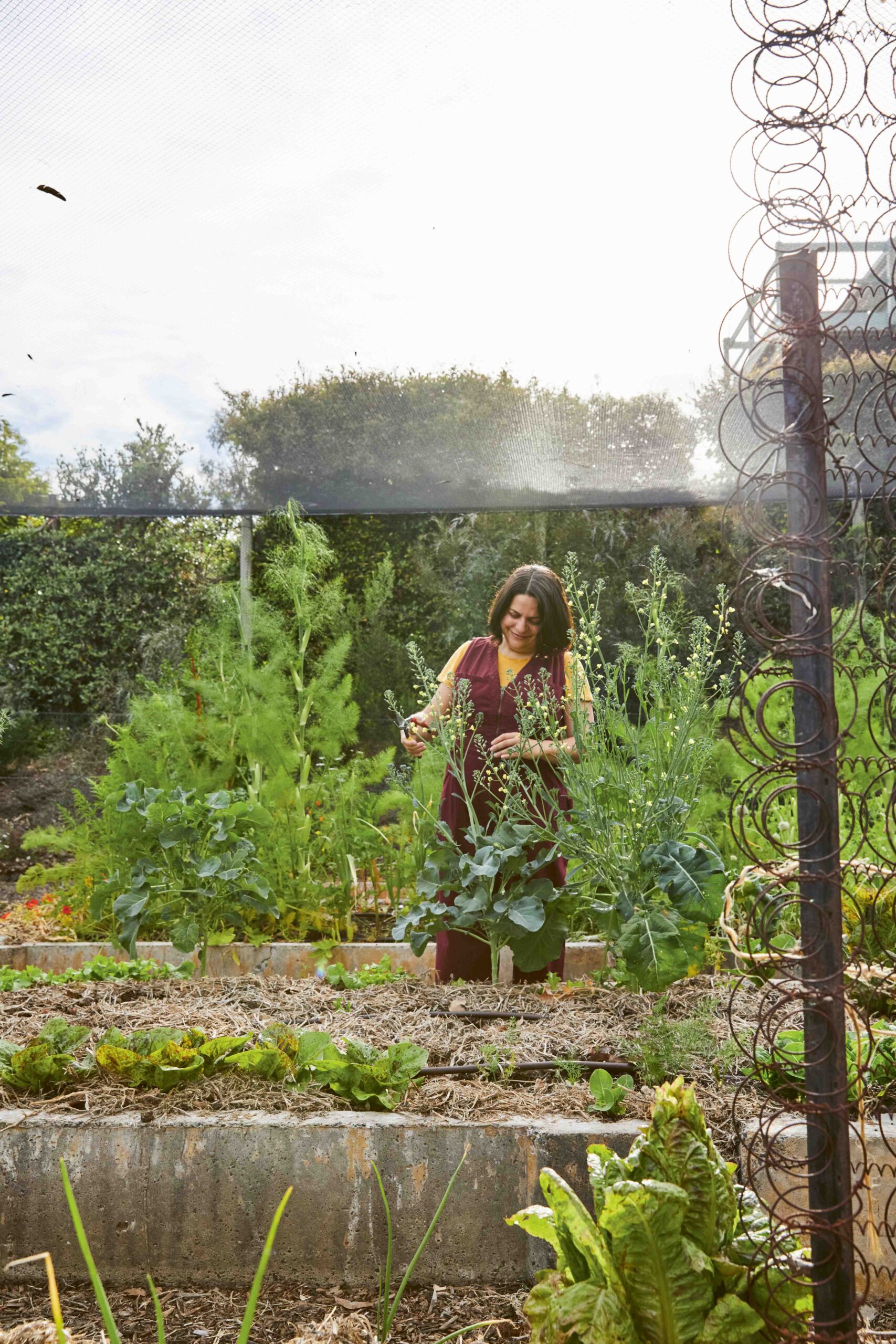
This section of the garden is dedicated to providing food for Jaclyn's family; the rest is a 'habitat garden', designed to encourage birds, bees and butterflies.
PHOTOGRAPHY ARMELLE HABIB
Letting your garden become a little ‘untidy’ will reward you with a wealth of native bees (as well as native birds). Allow native grasses to grow, don’t remove dead tree branches (unless there’s a risk of them falling and hurting someone), and leave leaf litter in situ.
Native bees will roost on grass stems and possibly even nest among the tussocks. Vegetable plants that are left to flower provide an extra opportunity for native bees to collect pollen. Wood-boring bees will make use of logs. If you use dead tree branches as garden edging or as part of your landscaping, then you may find several species of native bees, including carpenter bees, using them as nesting sites.
Wild gardens are beautiful because they don’t fight Mother Nature’s cycles. These wild spaces do much more for native bees than any manufactured bee hotel ever could.
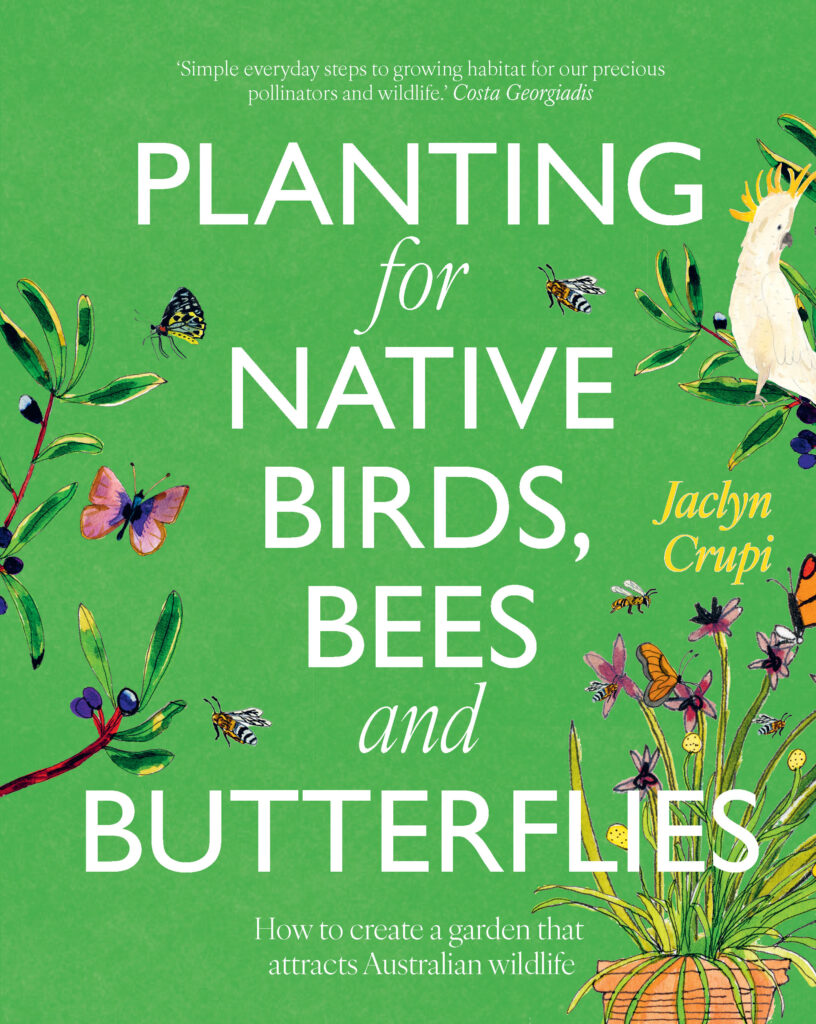
Images and text from Planting for Native Birds, Bees and Butterflies by Jaclyn Crupi, photography by Armelle Habib, illustrations by Claire Mosley. Murdoch Books RRP $34.99.
Like this article? Consider supporting independent media by subscribing to Graziher, or giving a gift subscription to someone special.
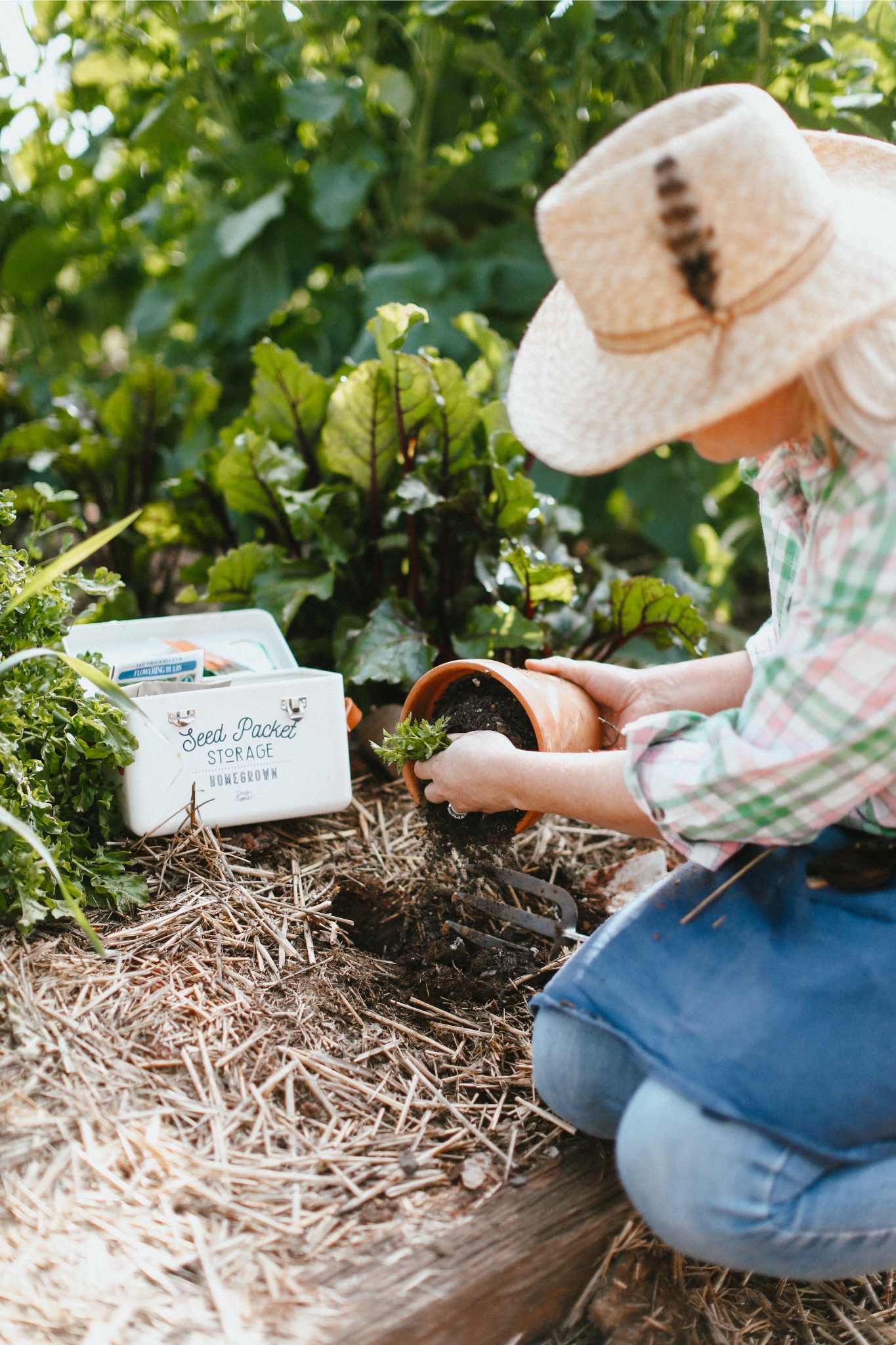
Claire started a garden to help herself put down roots in a new town. Here's what she's learnt so far.
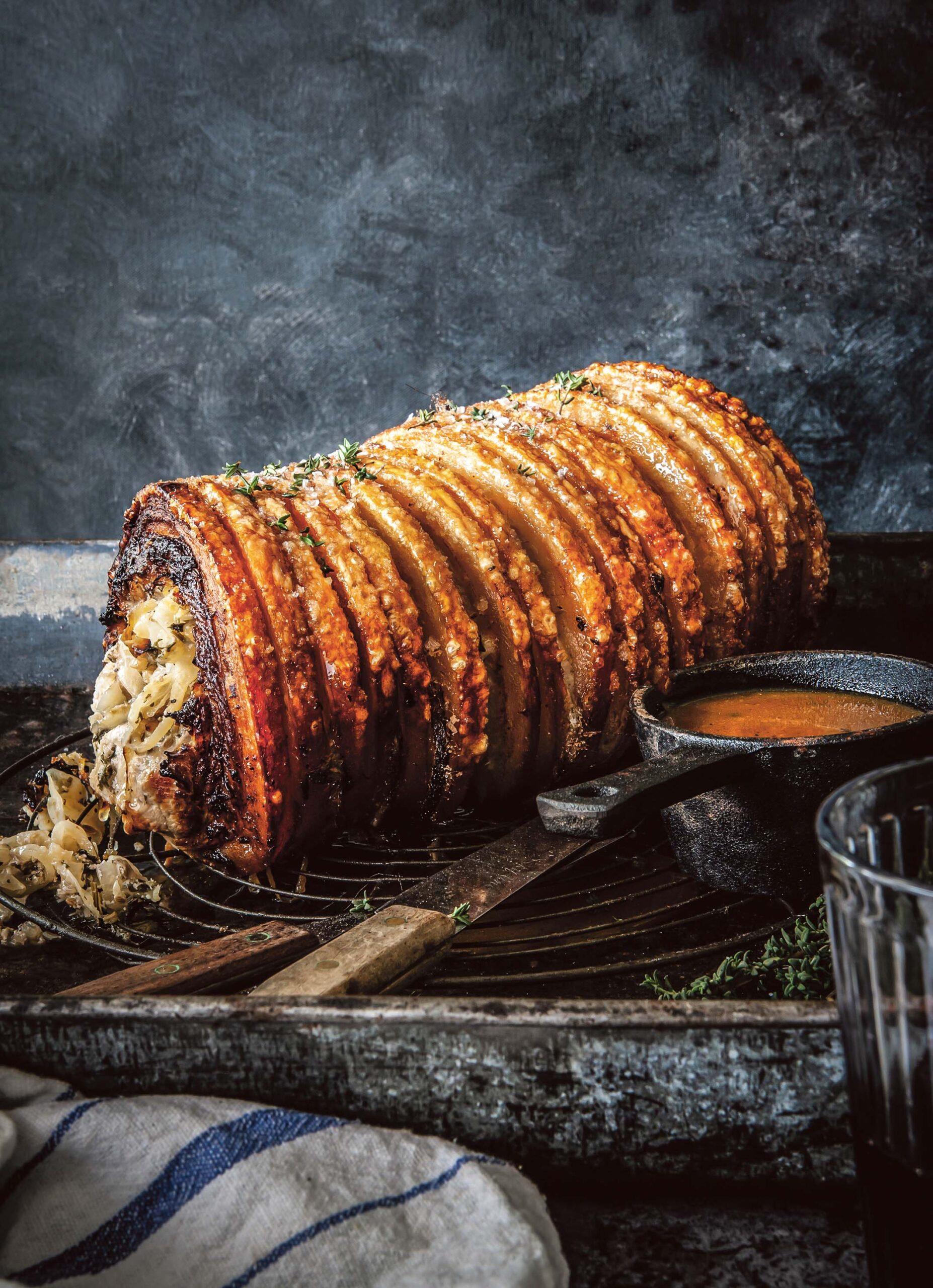
Irish butcher-and-chef duo Rick Higgins and Gaz Smith share recipes for porchetta with a winning stuffing, an indulgent mash and lamb shoulder with mother sauce.
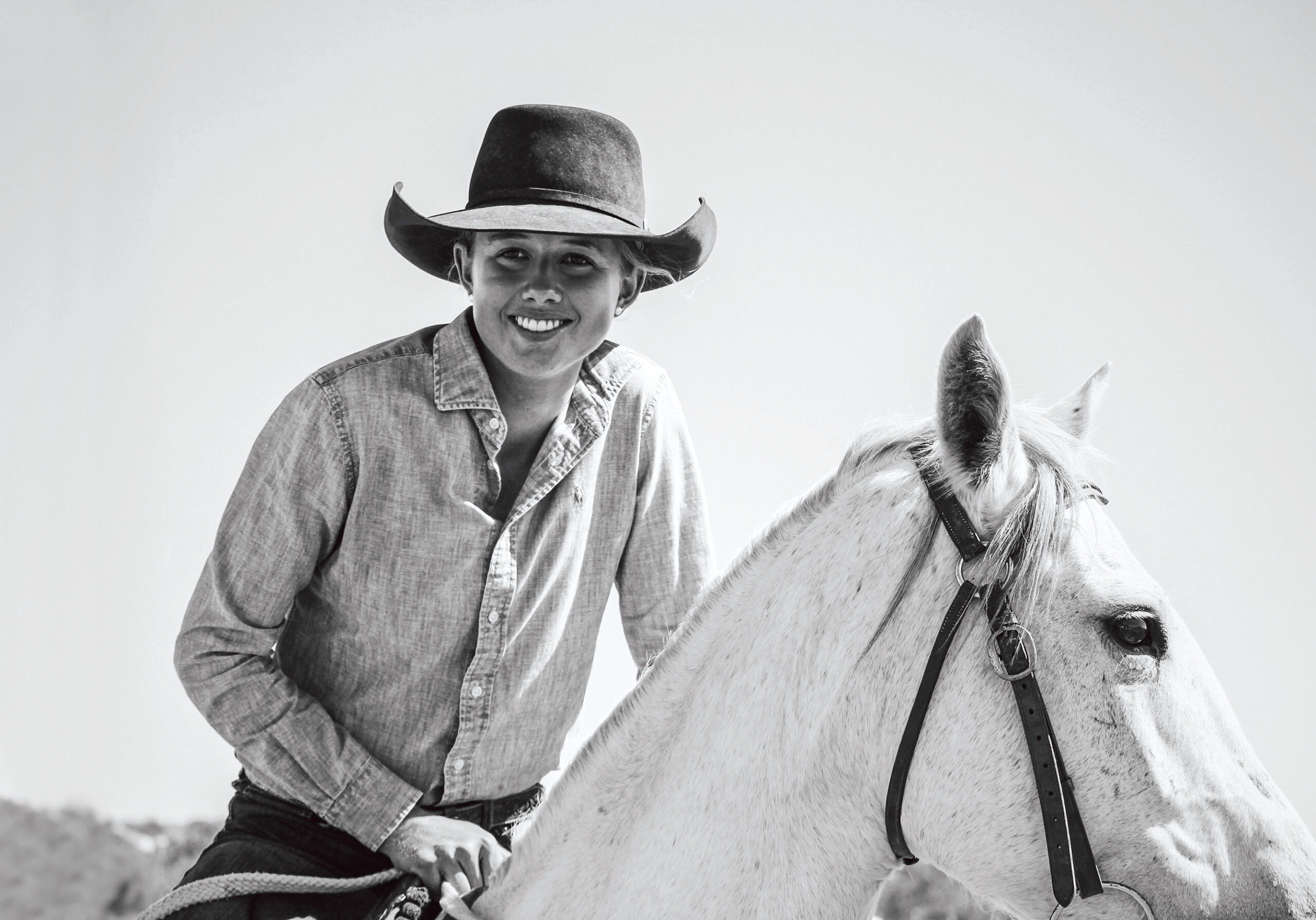
Photographers share highlights of life on the land, from high-stakes competitions to moments of quiet contemplation.